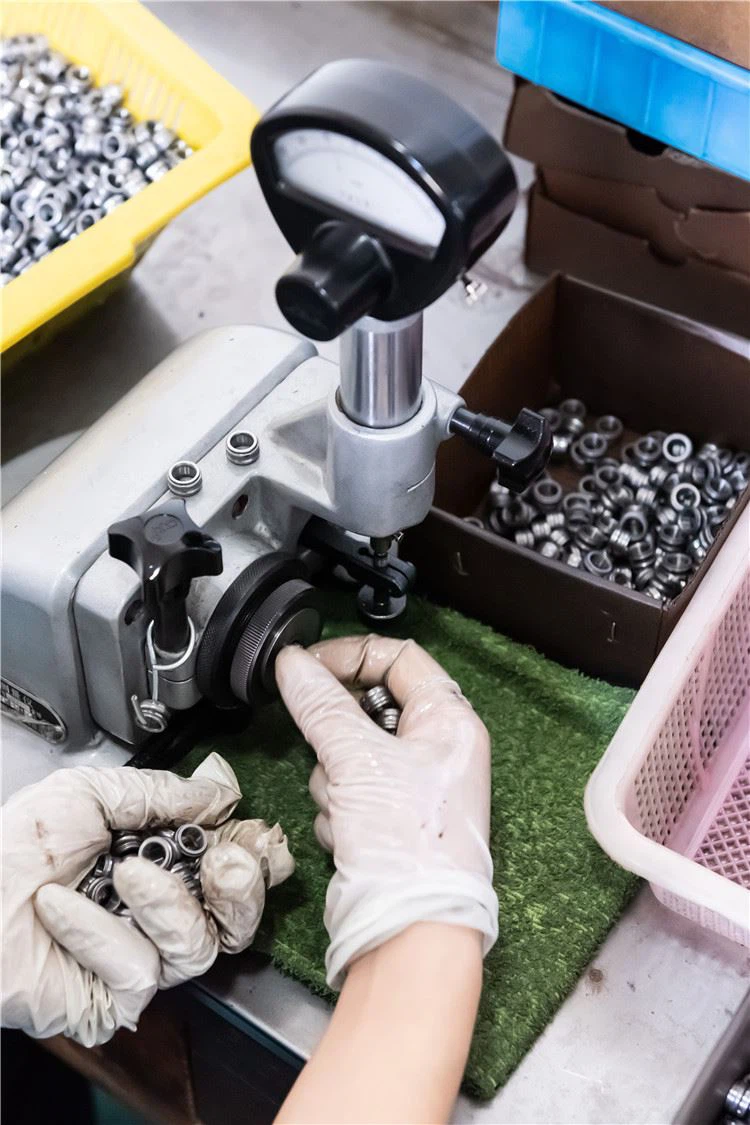Single Row Roller Bearing
Delivery term:The date of payment from buyers deliver within days-
Price:
Negotiable
- minimum:
- Total supply:
-
Delivery term:
The date of payment from buyers deliver within days
-
seat:
Zhejiang
-
Validity to:
Long-term effective
-
Last update:
2021-08-19 20:57
-
Browse the number:
398
+
- Contactaixin:
Contactaixin:
dazhi(Mr.)
-
Email:
telephone:
phone:

-
Area:
Zhejiang
Address:No.2 Xiaoqian Rd, Xinpu Town, Cixi, Ningbo City, Zhejiang Province, China
- Website:
+
Deep groove ball bearing:16010 Open type----Extra-light metric series
Definition
Deep groove ball bearings are the most common type of rolling bearings. The basic deep groove ball bearing consists of an outer ring, an inner ring, a set of steel balls and a set of cages.
16010 bearing is a kind of deep groove ball bearing, mainly used for center, thimble, wire stripping machine, magnetizing machine, ventilator, one-way valve, impact testing machine, knife belt, non-destructive testing instrument, cloth wheel, car lights And other equipment.
Abstract graph

16010 Basic data
ITEM: |
16010 bearing |
||
TYPE: |
DEEP GROOVE BALL BEARING |
BRAND: |
NA |
Bearing Name: |
16010 |
WIDTH B(mm): |
10mm |
BORE d: |
50mm |
OUTER DIAMETER D: |
80mm |
● Cr rated dynamic load (N): 15400
● Cor static load rating (N): 12400
● Cr rated dynamic load (Kg): 1570
● Cor rated static load (Kg): 1260
Speed Ratings
● Reference speed: 18000 r/min
● Limiting speed: 11000 r/min
Major application
Mainly used for grinders, geology and mining, seismic equipment, magnetic components, non-destructive testing equipment, tool holders, leakage emergency, hinge industry, expansion valves, throttle valves, automotive lights and other equipment.
Bearing Steel
Bearing steel is also known as high-carbon chromium steel. The carbon content Wc is about 1%, and the chromium content Wcr is 0.5%-1.65%. Bearing steel is divided into six categories: high carbon chromium bearing steel, chromium-free bearing steel, carburizing bearing steel, stainless bearing steel, medium and high temperature bearing steel and antimagnetic bearing steel.
High-carbon chromium bearing steel GCr15 is the most produced bearing steel in the world. The carbon content of Wc is about 1%, and the chromium content of Wcr is about 1.5%. From its birth in 1901 to the present 100 years, the main components have basically not changed. With the advancement of science and technology, research work continues, and product quality continues to improve, accounting for more than 80% of the world's total bearing steel production. So if there is no special description for bearing steel, it refers to GCr15
The physical properties of bearing steel:
The physical properties of bearing steel are mainly to check the microstructure, decarburized layer, non-metallic inclusions, and macrostructure. Under normal circumstances, they are delivered by hot-rolled annealing and cold-drawn annealing. The delivery status should be indicated in the contract. The macrostructure of the steel must be free of shrinkage cavities, subcutaneous bubbles, white spots and microscopic pores. The center porosity and general porosity shall not exceed 1.5 grades, and the segregation shall not exceed 2 grades. The annealed structure of the steel should be fine-grained pearlite evenly distributed. The depth of decarburization layer, non-metallic inclusions and carbide unevenness should comply with relevant national standards and regulations
Bearing Steel Process flow
(1) 50 tons and above UHP electric furnace smelting → 60 tons and above LF furnace refining → 60 tons and above VD furnace vacuum treatment → alloy steel billet or rectangular billet continuous casting (260mm×300mm, 180mm×220mm) → slow cooling or Hot delivery→rolling material→finishing→inspection and storage.
(2) Converter smelting of 90 tons and above → LF furnace refining of 100 tons and above → vacuum treatment in RH furnace of 100 tons and above → alloy steel billet or rectangular billet continuous casting → (eg:320mm×340mm, 240mm×240mm) slow cooling Or hot delivery→rolling material→finishing→inspection and storage.
Bearing Steel Performance requirements
In order to meet the above requirements for the performance of dynamic bearings, the following basic performance requirements are proposed for bearing steel materials:
1) High contact fatigue strength,
2) After heat treatment, it should have a high hardness or a hardness that can meet the performance requirements of the bearing.
3) High wear resistance, low friction coefficient,
4) High elastic limit,
5) Good impact toughness and fracture toughness,
6) Good dimensional stability,
7) Good anti-rust performance,
8) Good cold and hot processing performance.
Manufacturing requirements of bearing steel
The content of inclusions is closely related to the oxygen content in the steel. The higher the oxygen content, the greater the number of inclusions and the shorter the life span.
The larger the particle size of inclusions and carbides, the more uneven their distribution, and the shorter their service life. Their size and distribution are closely related to the smelting process and smelting quality used. The main processes for producing bearing steel are continuous casting and electric furnace Smelting + electroslag remelting process smelting, and a small amount of vacuum induction + vacuum self-consumption double vacuum or + multiple vacuum self-consumption processes to improve the quality of bearing steel.
The smelting quality of bearing steel is very demanding. It is necessary to strictly control the content of sulfur, phosphorus, hydrogen, etc. and the quantity, size and distribution of non-metallic inclusions and carbides, because of the quantity, size and distribution of non-metallic inclusions and carbides The condition has a great influence on the service life of the bearing steel, and the failure of the bearing is often caused by the expansion of microcracks generated around large inclusions or carbides.
Quality Assurance
1. Hardness testing machine

2. Inspection device

3. Automatic “ok checking” device on line:

4. Bore inspection manually after automatic machine

5. Roundness inspection microsoft

6. VIBRATION TESTING--Manual inspection after automatic machine test 100% for each part

http://www.dazbearing.com/






